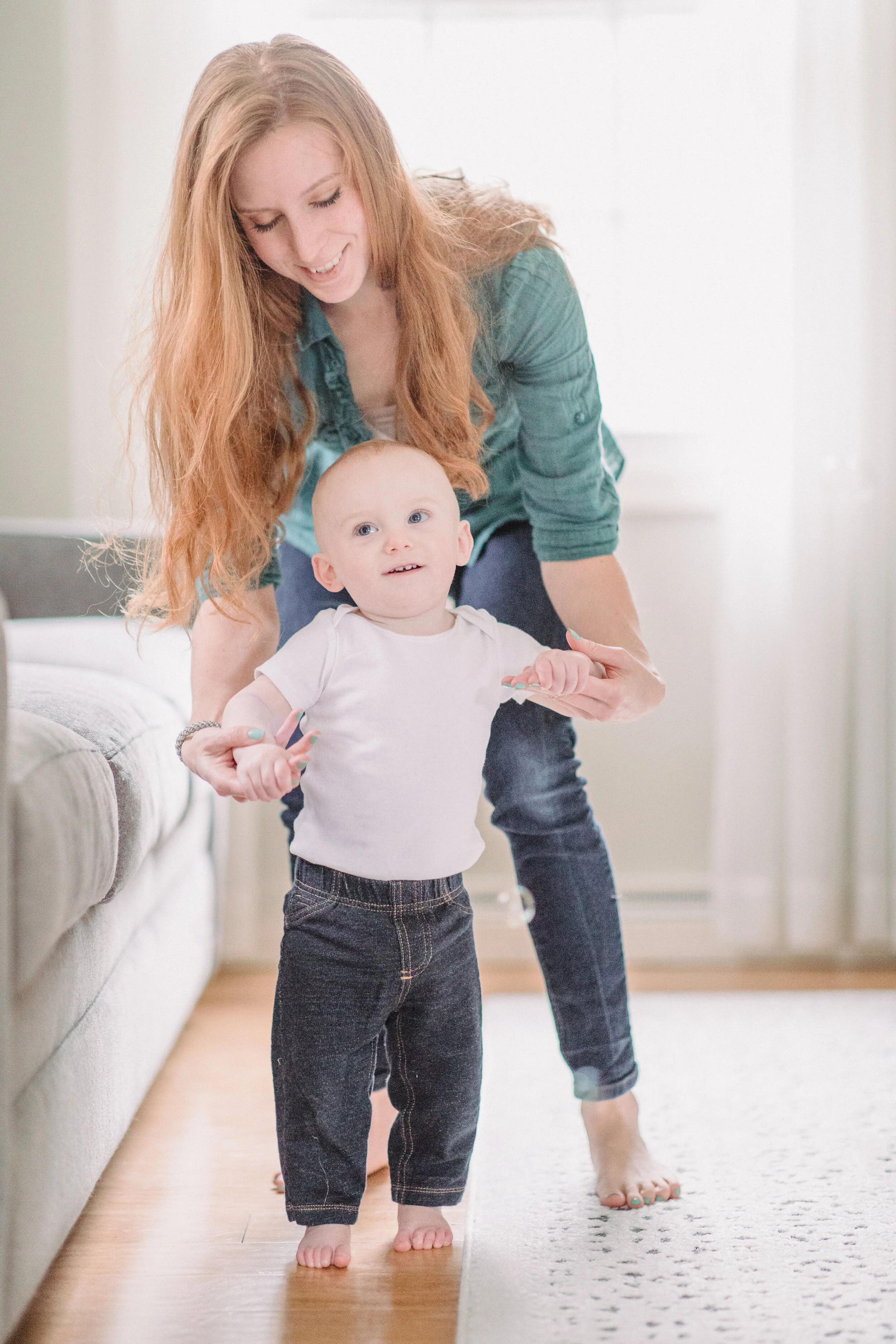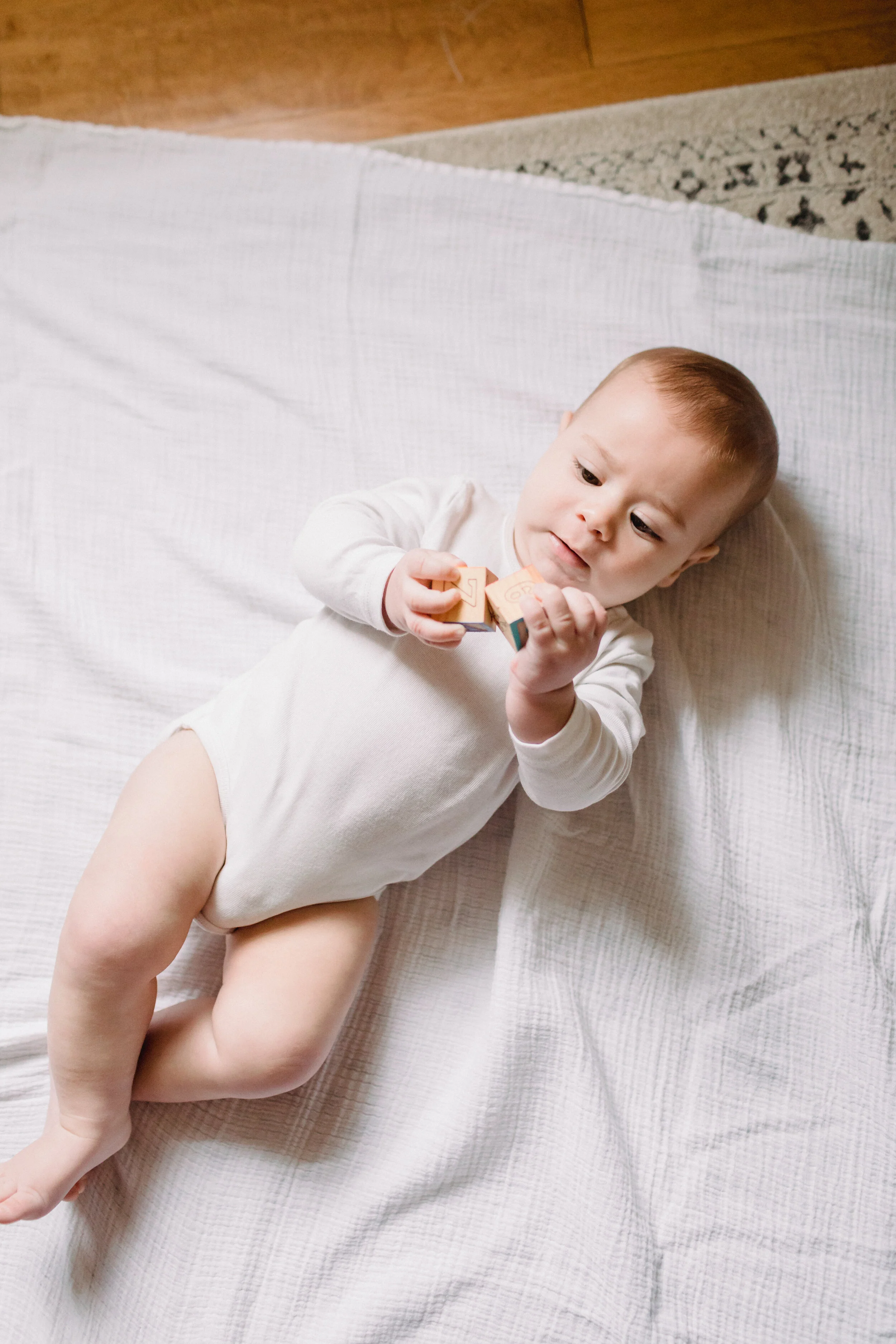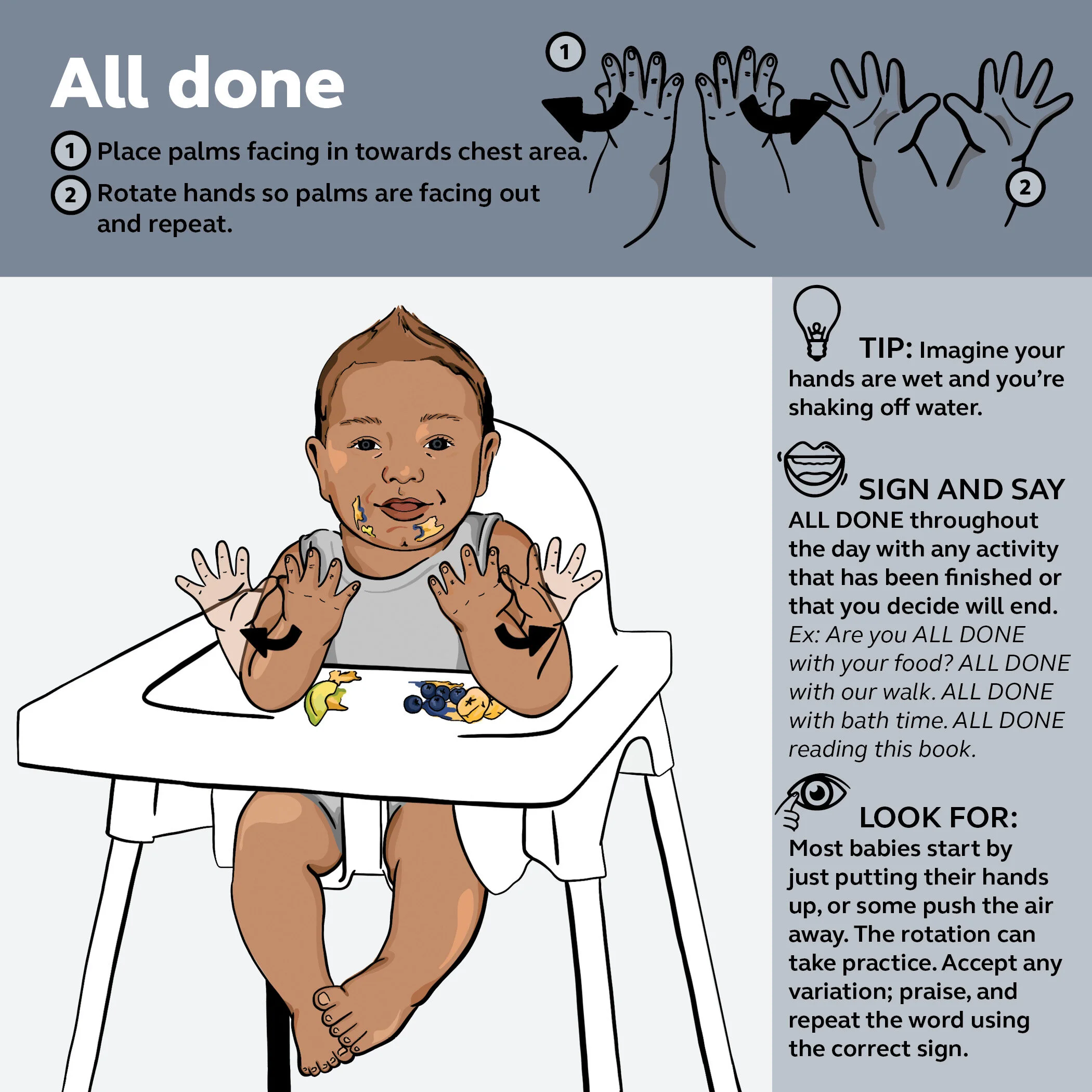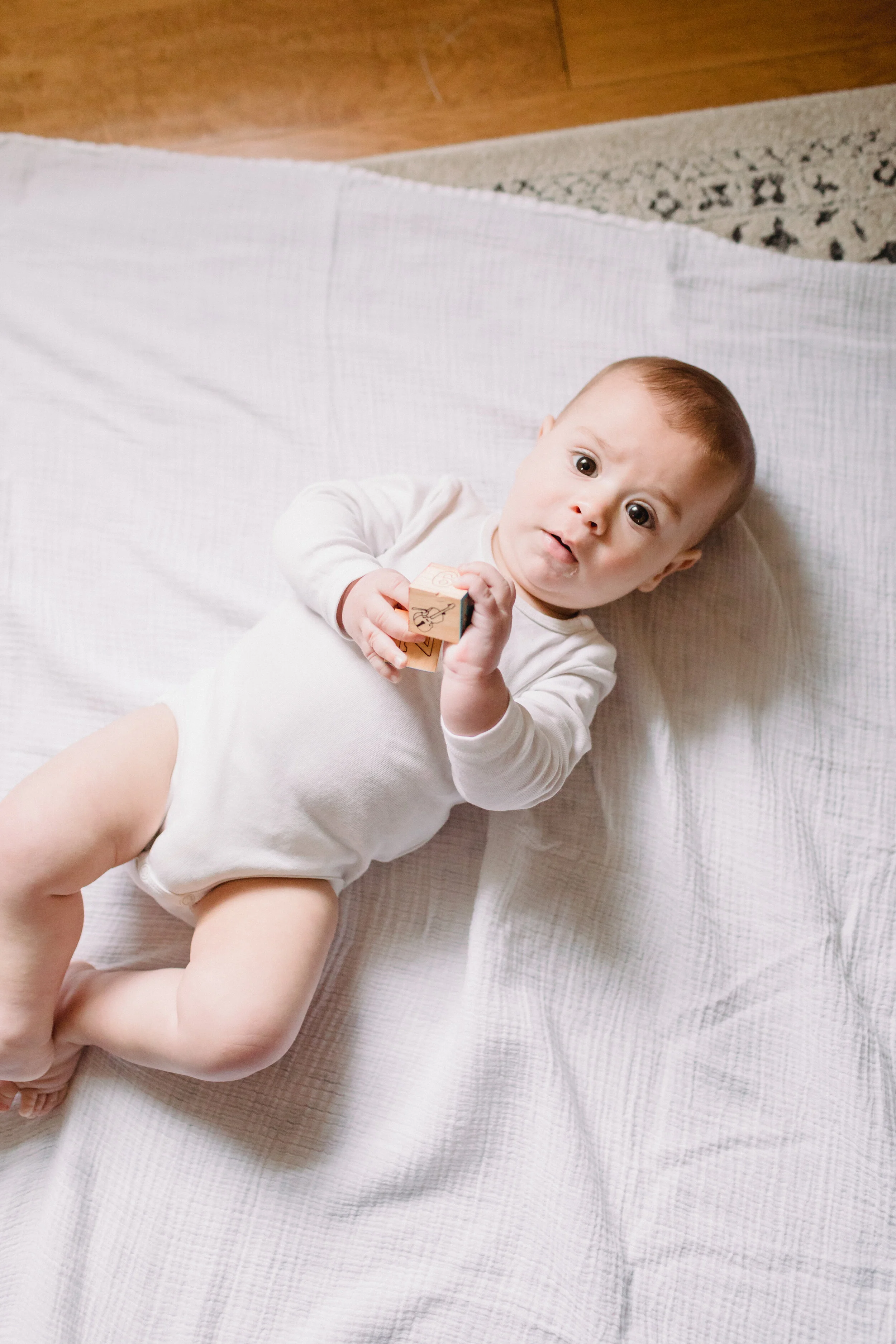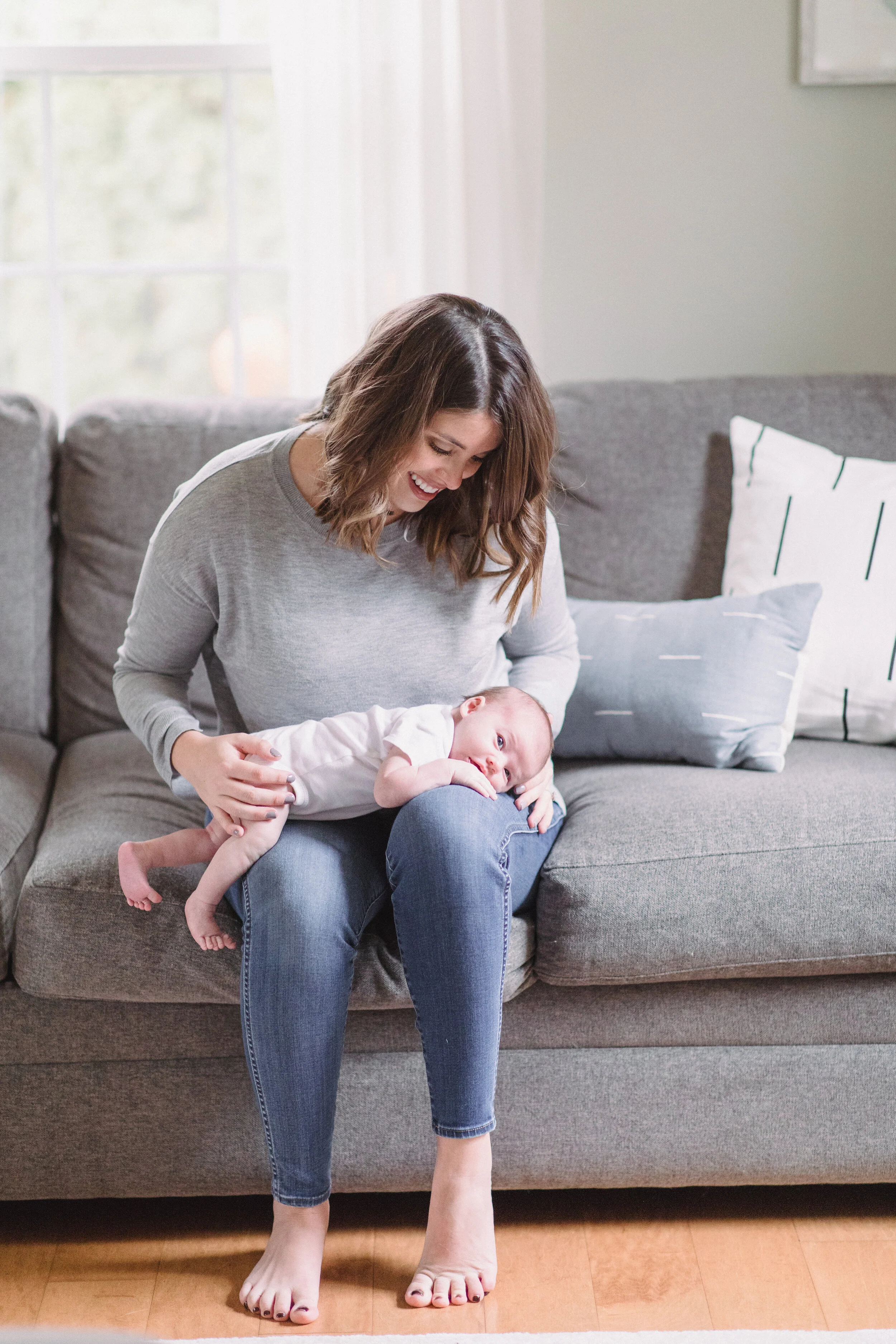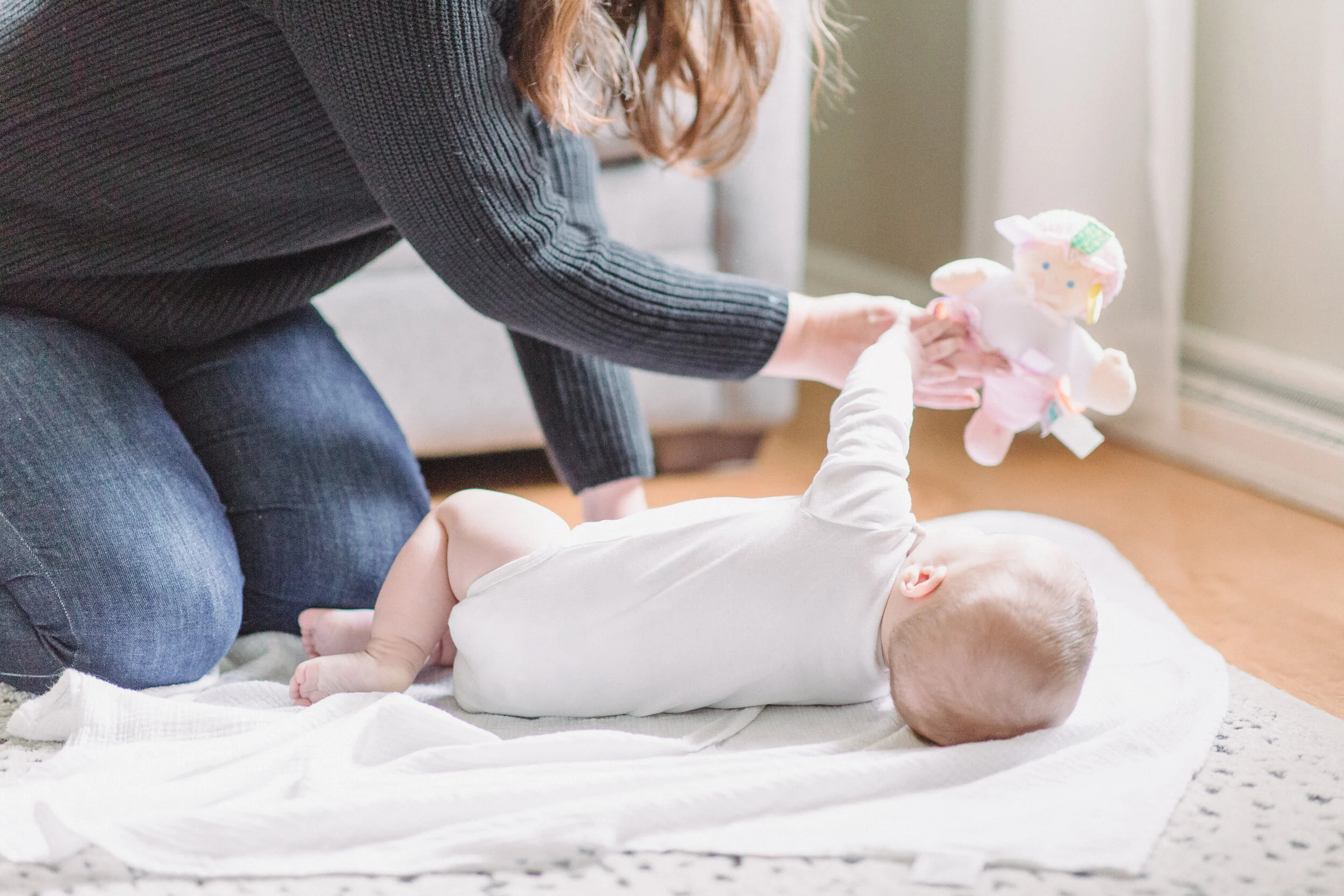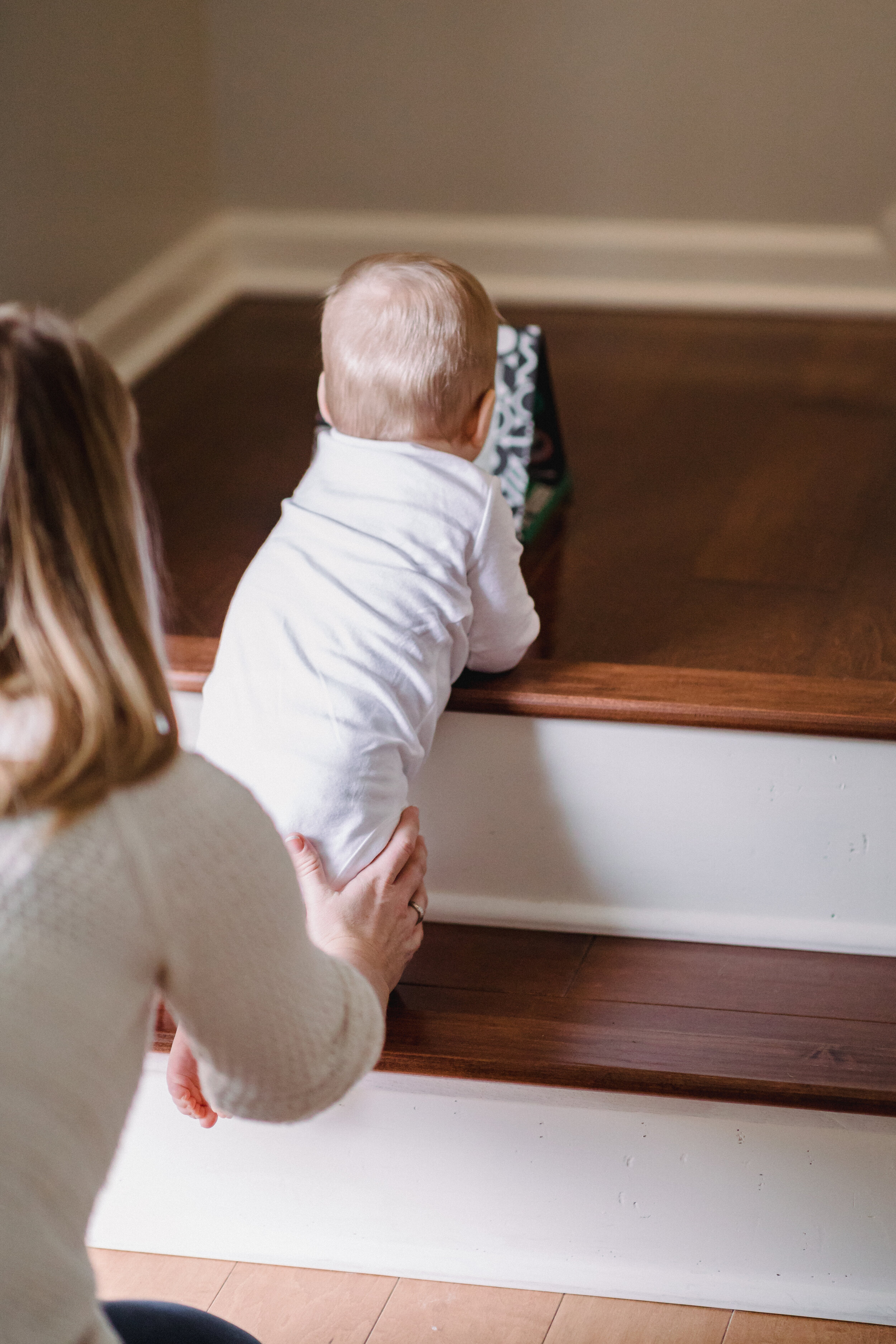Traveling with a baby can be tough, give yourself some grace and try to be flexible. We’ve traveled a lot with our babies so here are some of the tips and car friendly play ideas we’ve learned along the way. We hope they help you!
Floor Play Ideas for Every Stage of Development
Parents often hear that tummy time is important for babies but research supports that floor play is actually very important for every stage of baby’s motor development. That’s why we’re passionate about our “The Floor Builds the Core™” concept which states that a baby gets stronger and masters motor skills by learning how to move in and out of positions while they’re on the floor.
More info here on the movement science behind our “The Floor Builds the Core™” framework.
Play to Prepare for Walking
Babies need to progress through motor skills to master them and then build on them. Strength and endurance are gained through play in preparatory positions like kneeling, squatting, cruising, or walking behind a push toy. Most parents are dying to celebrate first steps, but don’t rush it! Here are some fun and easy ways to play to strengthen baby for first steps.
How to Play with a Wobbly Sitting Baby
Did you know that sitting is only functional if you can do something there - like reach or watch something? Well, being placed in sitting but not being able to do anything, reach for anything, play, or get in and out of the position isn’t very functional for baby. And you know we’re all about functional play around here! Below you’ll find ways to play with your babe throughout the progression of learning to sit .
Play Activities for Baby Hands
Did you know that hand skills are developed through crawling? It's true! Crawling develops the upper body and the arches of the hands which later helps with holding a fork, writing, tying shoes and lots more! Here, you’ll find simple play ideas to help develop baby hands from birth through the first year.
Baby's Hands - The Foundation to Dexterity
Keeping Baby Busy While Working From Home
Signing with Babies
The Power of Baby Sign Language - A Book Review
Our friend, Elise Tate, just released her first book called Sign Me Up for a Happy Home. It’s filled with 15 baby signs and is full of great illustrations and written examples of how to do and remember each sign. Check it out here!
New Parent Hacks - How to Avoid Baby Containers and Still Get Through Your Day
So you read our post on avoiding baby containers and now you’re wondering how you’ll get through a busy day while still sneaking in a shower or making dinner without using all of the baby contraptions like a swing, bouncer, exersauser, jumper, or Bumbo? We’ve got you covered!
Baby Containers - How and Why to Avoid Them
Baby gear/contraptions/containers all refer to a piece of equipment that puts a baby into a position and keeps them there. Gear like a swing, bouncer, exersaucer, jumper, or Bumbo. Most of this gear puts baby into a position they are not yet ready to maintain on their own and can not get into/out of on their own - meaning it’s not developmentally appropriate for them. Containers prevent a baby from moving in and out of positions naturally! Developmentally speaking, the devices pictured above, generally put babies into positions their little bodies are not yet ready for and they prevent baby from freely moving.
Sitting - How to Teach a Baby to Sit
Tummy Time Positions for Newborns
Many new parents have asked us, “What do I do with a newborn all day?” Our answer: Take that nap and when you wake up, spend time holding, snuggling, and getting to know your baby in those early days, and from day one, get baby on his/her belly regularly! All future movements your baby will learn start in tummy time.
How to Encourage Your Baby to Roll
Rolling is one of baby’s first forms of mobility. It allows baby to start the process of seeing something and actually going to get and explore it. Rolling is a complicated movement that requires the two sides of the body to do opposite movements. This is important for the brain- body connection (i.e., how the body learns to respond appropriately when the brain says “reach”), to build neuronal maps (i.e., how baby will learn to move in 3D space), to strengthen bilateral coordination skills (i.e., to use both sides of the body), and is preparing baby to develop more complex movements.
How to Encourage Your Baby to Crawl
Crawling is extremely important for hand skills later in life. As baby puts weight through the shoulders, forearms, wrists, hands and fingers, he/she is developing strength, dexterity, hand-eye coordination, and sensory integration that will be used later in life to support many skills, including a functional grip when holding a fork at mealtime, handwriting, and zipping a coat.
What to do if Your Baby Skipped Crawling
You probably know someone or have at least heard stories of people who skipped crawling, went straight to walking, and “turned out just fine.” We’ve met these people too! If your baby skips crawling, he/she WILL probably be just fine, BUT we are here to make a case for not “skipping” this milestone and circling back to it if your baby did not, or only briefly crawled on hands and knees before walking.
How to Encourage Your Baby to Take First Steps
One of my most commonly asked questions from parents is, “How do I teach my baby to walk? He seems close!” Without seeing your child, it’s hard to say exactly why he isn’t walking yet, but it is most often because he needs to do a little more strength and endurance work before he is really ready to take those first dynamic steps unsupported- it is a ton of work!
Tummy Time Activities for Babies 0-6 Months Old
The tummy time position is important because it helps baby to strengthen the neck, back, and shoulder muscles. This strength allows baby to pick up his/her head and look around at the world. It strengthens the back muscles (those that run down the sides of the spine) so that the trunk (body) can eventually support the head and neck when moved into an upright or sitting position. Tummy time is important for all babies starting at birth to six months and beyond.



